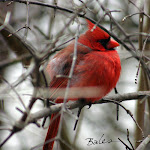
Imagine that you find yourself in a new world, brimming with life. Others may have explored it, but you bring a pair of fresh, learned eyes; you bring an attention to detail like none other.
You are a naturalist, thrilled by everything you see and virtually everywhere you look, you discover something you have never seen before. Dare I say, a plant or animal that’s new to science.
 While at the same time, the scientific community itself is experiencing something of an overhaul. Swedish botanist and zoologist Carolus Linnaeus had adopted a new system of naming all plants and animals. Prior to him, the names of species were wordy polynomials, i.e. long descriptive paragraphs. Linnaeus’ Systema Naturae published in the late 1700s provided a new, simpler method. Known then as Linnaean taxonomy, today we call it binomial nomenclature or simply binomials. Hence fore, every living thing was given a unique two-part scientific name generally in Latin. The first word designated its genus, the second its species.
While at the same time, the scientific community itself is experiencing something of an overhaul. Swedish botanist and zoologist Carolus Linnaeus had adopted a new system of naming all plants and animals. Prior to him, the names of species were wordy polynomials, i.e. long descriptive paragraphs. Linnaeus’ Systema Naturae published in the late 1700s provided a new, simpler method. Known then as Linnaean taxonomy, today we call it binomial nomenclature or simply binomials. Hence fore, every living thing was given a unique two-part scientific name generally in Latin. The first word designated its genus, the second its species. The Southern red oak in your front yard became Quercus falcate, while the related, but different chestnut oak beside it became Quercus prinus. The family dog was designated as Canis familiaris, while you and I are Homo sapiens. Often the original describer would be honored in the binomial itself as is Linnaeus in the red maple, Acer rubrum L or Tennessee’s own State Tree, the tulip tree, Liriodendron tulipifera L.
Into this world entered Rafinesque...
For the rest of my article about early American naturalist Constantine Samuel Rafinesque-Schmaltz, check out the current issue of The Tennessee Conservationist.
Thank you, editor Louise Zepp!
•


































































No comments:
Post a Comment